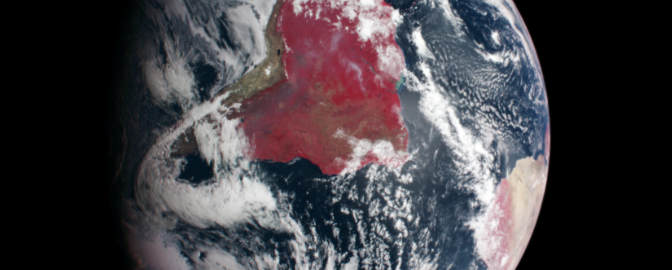It's not magic; it's magnetic!
The magnetism behind spectacular phenomena

Written by
Kate Howells
Public Education Specialist, The Planetary Society
June 9, 2025
Roughly every 11 years, the Sun completes a cycle of heightened and lowered activity. At its peak, called solar maximum, we see more sunspots, stronger magnetic activity, and an increase in solar flares and coronal mass ejections. At minimum, the Sun is calmer and more serene.
Solar maximum is responsible for some pretty impressive phenomena, from auroras to power blackouts. Behind it all is the powerful, invisible force of magnetism.
The Sun’s cycle all has to do with its magnetic field. In a mechanism called the solar dynamo, the movement of plasma within the Sun’s different layers creates electric currents, which in turn produce magnetic fields. Because different parts of the Sun move at different speeds as it rotates, those magnetic field lines can get tangled up, forming knots and loops. Those distortions manifest on the Sun’s surface as sunspots, solar flares, and coronal mass ejections.
As the Sun’s magnetic field lines get more and more tangled, all of this solar activity increases in frequency and intensity, peaking at solar maximum. Eventually, as the tangled field lines reconnect and reorganize, the Sun’s overall magnetic polarity flips, and its activity decreases. The Sun reaches solar minimum, and a new cycle begins as the continued movement of the plasma inevitably begins to tangle things up again.

This cyclical process isn’t unique to the Sun. Observations of other stars show similar patterns with activity cycles of varying lengths depending on their rotation rate.
Earth’s magnetic field is also known to periodically flip polarity, but the mechanism behind this change is very different. Our planet’s magnetic field is generated by the movement of molten metals in its outer core, in a process called the geodynamo. These liquid metals move much more slowly than plasma, meaning that Earth doesn’t experience the same kind of quick and frequent magnetic reversals that we see on the Sun. The last full polarity flip of Earth’s magnetic field happened around 780,000 years ago, and another isn’t expected for at least several thousand more years. However, unlike the Sun’s reliable cycle, Earth’s pole reversals happen at seemingly random intervals, so we aren’t sure exactly when to expect it.
Though our planet’s magnetic shifts operate on a vastly different timescale, both the Sun and Earth are governed by the unseen but ever-present forces of magnetism. What’s particularly fascinating is what happens when the magnetic forces of Earth and the Sun interact.
When a solar flare erupts from the Sun, the electrically charged particles it sends out into space interact with Earth’s magnetic field, which deflects them toward our planet’s poles. Here, they collide with atoms in the atmosphere and create the colorful light show we know as the aurora — a magnetic effect truly magical to behold.
Support our core enterprises
Your gift today will go far to help us close out the year strong and keep up our momentum in 2026.
DonateThe Planetary Report • June Solstice
Help advance space science and exploration! Become a member of The Planetary Society and you'll receive the full PDF and print versions of The Planetary Report.


 Explore Worlds
Explore Worlds Find Life
Find Life Defend Earth
Defend Earth


